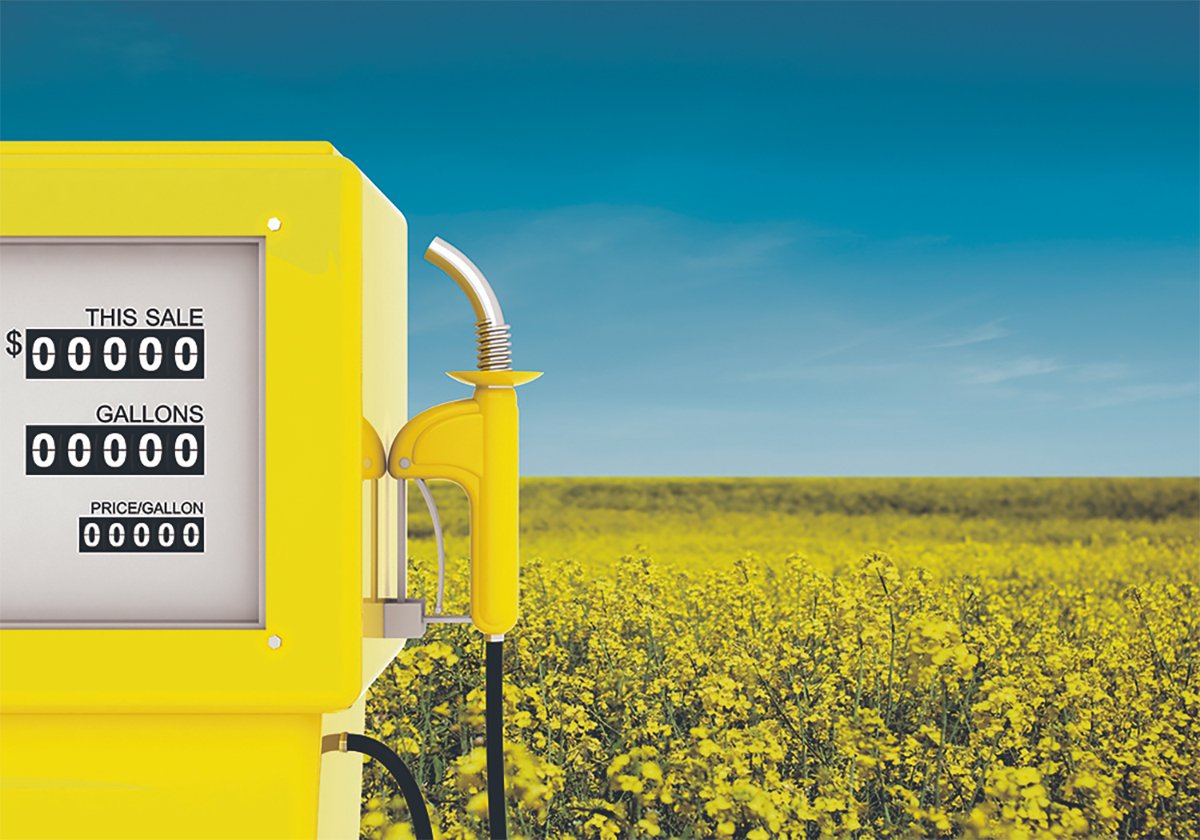Fed prices drop
The fed cattle market was under pressure last week as the combination of larger show lists, a rising Canadian dollar and a declining beef market caused packers to significantly lower bids for market-ready cattle, said Canfax.
The average steer price last week was $97.83 per hundredweight, down $3.50 per cwt. compared to the week before. The average heifer price was $97.47 per cwt., down $4 from the week before.
Trade on May 23 and 24 saw Alberta prices at $95.50-$98.50 per cwt. live and $160.50-$165 on the rail.
Read Also

Biofuel sector happy with federal budget
Advanced Biofuels Canada says new Biofuel Production Incentive is a lifeline until CFR amendments are in place.
Packer interest waned as the week closed.
Volume rose to about 24,000 head.
The Canada to U.S. cash-to-cash basis widened to $6.25 under per cwt. from $5.36 under, but was still significantly better than the usual basis for this time of year.
Fed cattle exports declined due to the narrow basis with only 7,776 head moving south.
Canfax said feedlots moved all their show lists during the week, but offerings are expected to grow in the weeks ahead. That, combined with the strength of the Canadian dollar and falling beef prices, will make it hard for feedlots to stop the decline in fed prices.
Beef prices weaken
U.S. cut-out prices fell with Choice down $6.34 US to $160.06 and Select down $5.09 to $148.53.
The Choice-Select spread narrowed to $11.53.
Retailers and processors hoped for good demand for the U.S. Memorial Day holiday as consumers were expected to stay close to home because of higher fuel costs.
In Canada, the Victoria Day weekend saw sluggish sales. Retailers are light on beef features and unwilling to pay for the higher middle meat cuts.
The Calgary wholesale price for delivery this week was $169-$171, $2 lower than last week.
Feeder demand strong
Auction market volumes fell to about 23,500 head, down 21 percent from the week before but 18 percent larger than last year, said Canfax. With feedlots looking to fill empty pen space, heavy feeders have continued to be in good demand.
Feeders traded stronger with steers 900 lb. and heavier up $3.50 and steers 700-800 lb. up $1.75-$2.50 per cwt.
Heifers 800-900 lb. and heavier were up $2-$2.50.
Steers 500-700 lb. rose $2-$2.25 and heifers 500-800 lb. were up $1.50-$2.75.
Light steer calves 300-500 lb. rose $1.50-$2 and light heifers 300-500 lb. were steady to $3 higher.
Given good moisture and lots of grass available, quality grass cattle have brought a premium, said Canfax.
Butcher cows fell $2.75-$3.50. Many factors are contributing to the roller-coaster in the cow market, with kill numbers fluctuating weekly and limited offerings.
Butcher bulls were $1.25 lower.
With smaller numbers heading to auction, expect good demand and steady to higher prices for grasser and heavier feeders, said Canfax.
Feeder cattle exports for the week ending May 19 were 7,047 head, down 10 percent from last week.
Bred cow trade was light with most action in northern Alberta and some sales in central Alberta.
Bred cows were mostly $400-$800, with top quality $900-$1,200. Plain bred heifers in northern Alberta were $500-$800.
Cow-calf pairs traded steady at $850-$1,250, with plain types $525-$800.
Hogs mostly steady
U.S. hog prices started the week a little stronger, but weakened as the week progressed and packers met their needs for the short Memorial Day week.
Pork prices weakened, turning packer margins negative.
Iowa-southern Minnesota hogs traded May 25 at $55 US per cwt., steady with May 18 prices.
The U.S. composite pork carcass cut-out value was $76.29 May 25, down from $77.92 on May 18.
Slaughter for the week was estimated at 1.98 million, compared with 1.95 million a week ago and 1.93 million a year ago.
Bison steady














